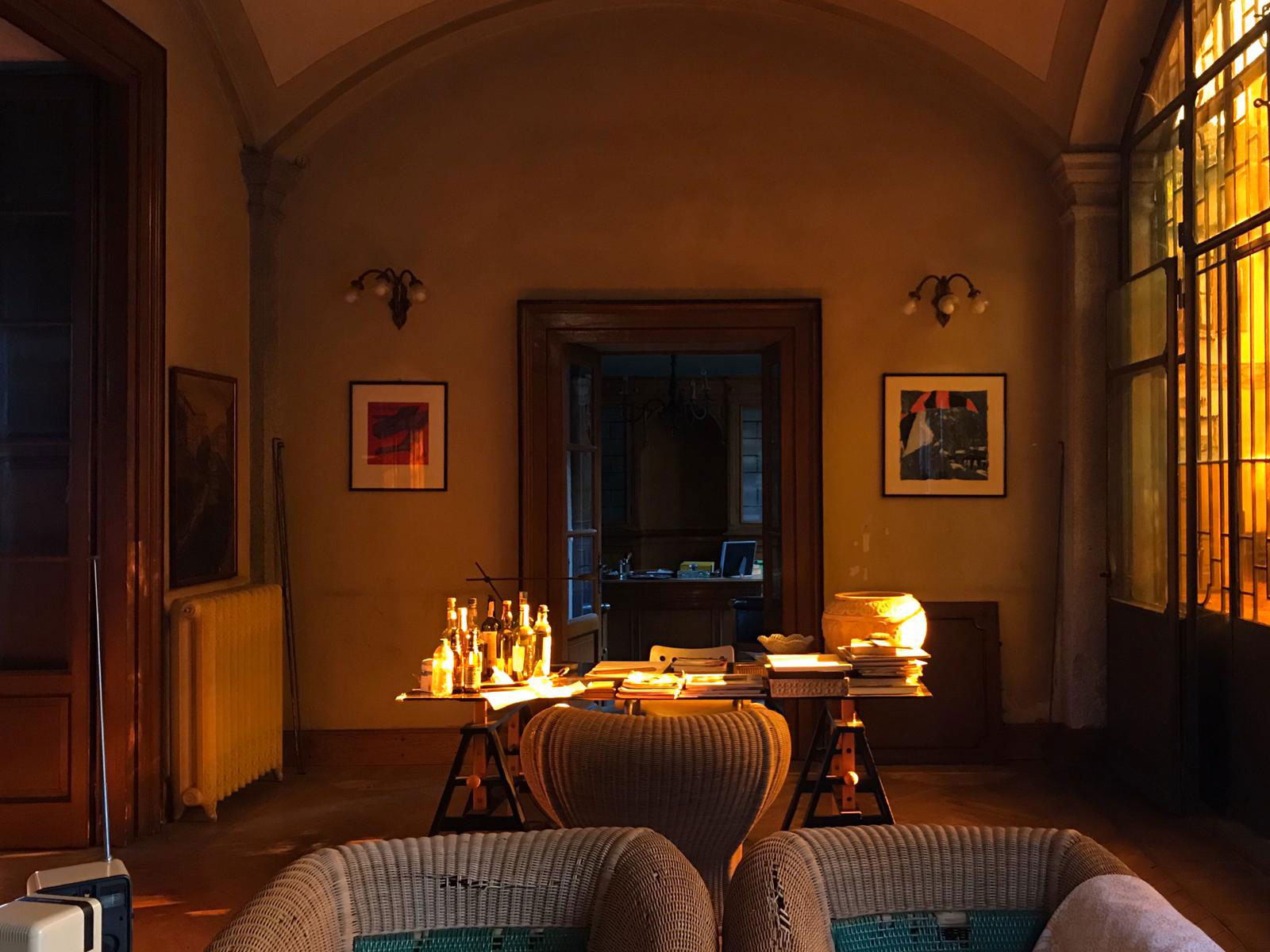
“This is the true nature of home: the place of peace; refuge not only from wrong, but also from all fear, doubt and discord…”
J. Ruskin
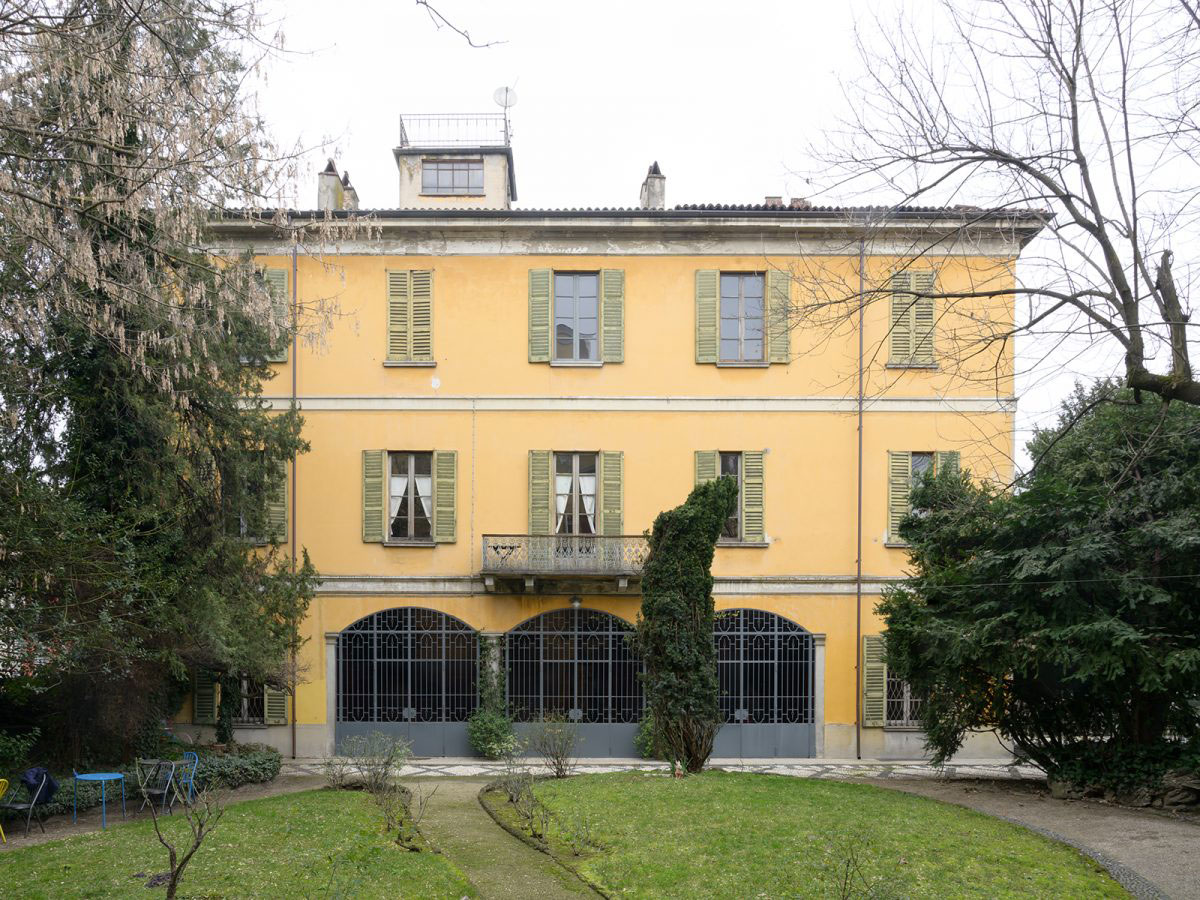
CREDITS
Client: Private
Location: Stradella
Concept: MOSAE srl
Timeline: in progress
Team: Michele Maddalo, Giacomo Maddalo, Barbara Corli
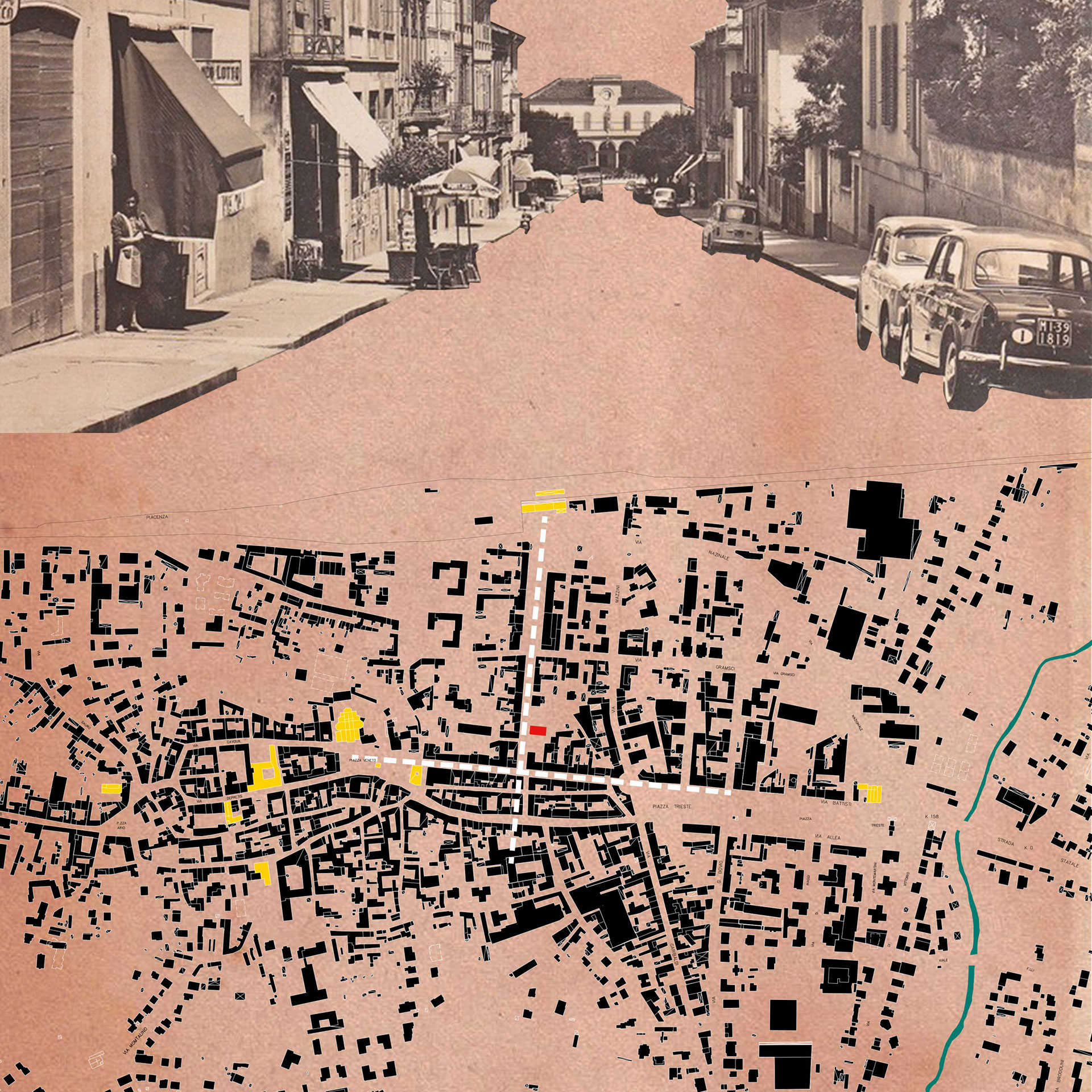
Here, on the corner of Via Martiri Partigiani and Via Vittorio Emanuele (today Corso XXVI Aprile), Villa Naj is bordered by the road that traces the north-south axis of the city and that starting from the station (just 5 minutes on foot away from the Villa) enters to the historic center of Stradella.
Via Vittorio Emanuele is, in fact, the street that runs through the center and that allows you to reach the main places of the city in a few minutes on foot: the Civic Tower overlooking Piazza Vittorio Veneto, the seventeenth-century Palazzo Isimbardi, the Accordion Museum and the Museum Naturalistic with its sections of botany, ecology, environment, but above all, geology and paleontology with local finds.
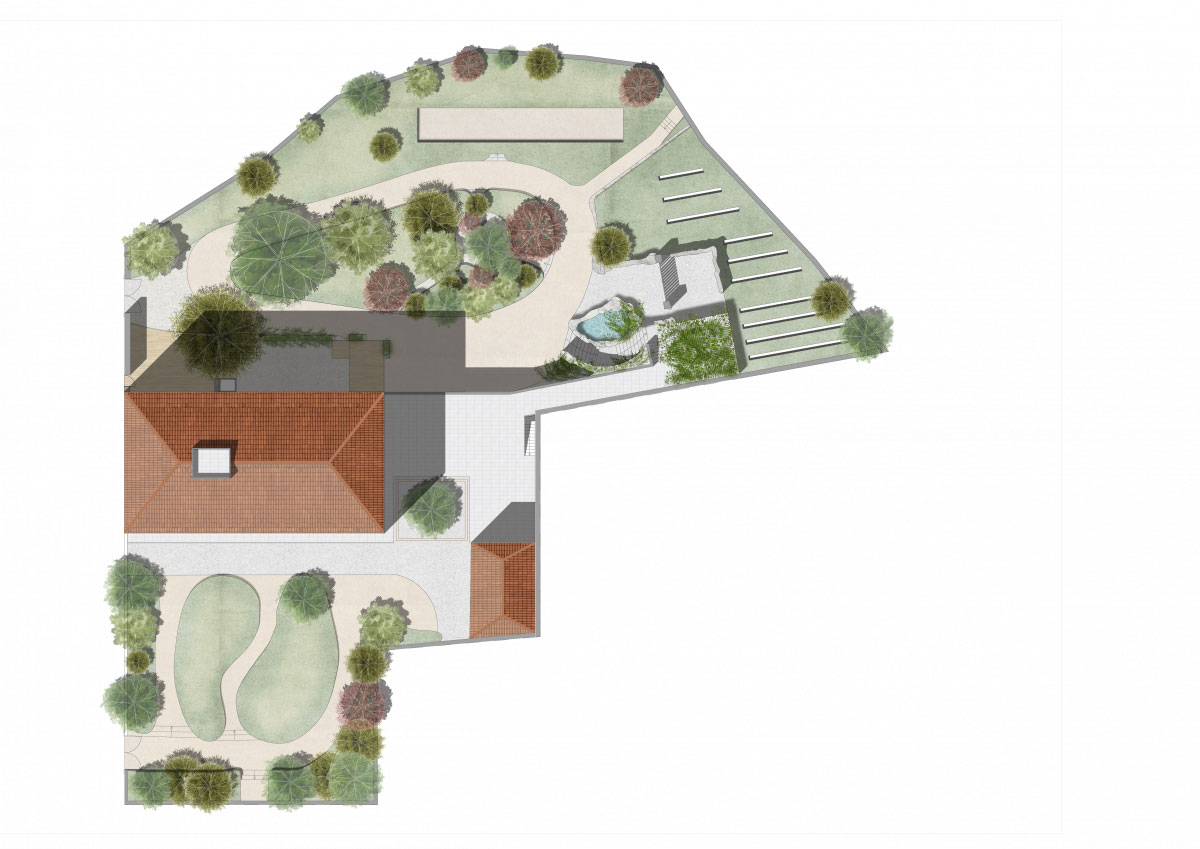
Two large gardens on two different levels. A small park. They develop north and south of the main building at two different altitudes. The palace separates them, only in part, since they are connected by a beautiful liberty design staircase.
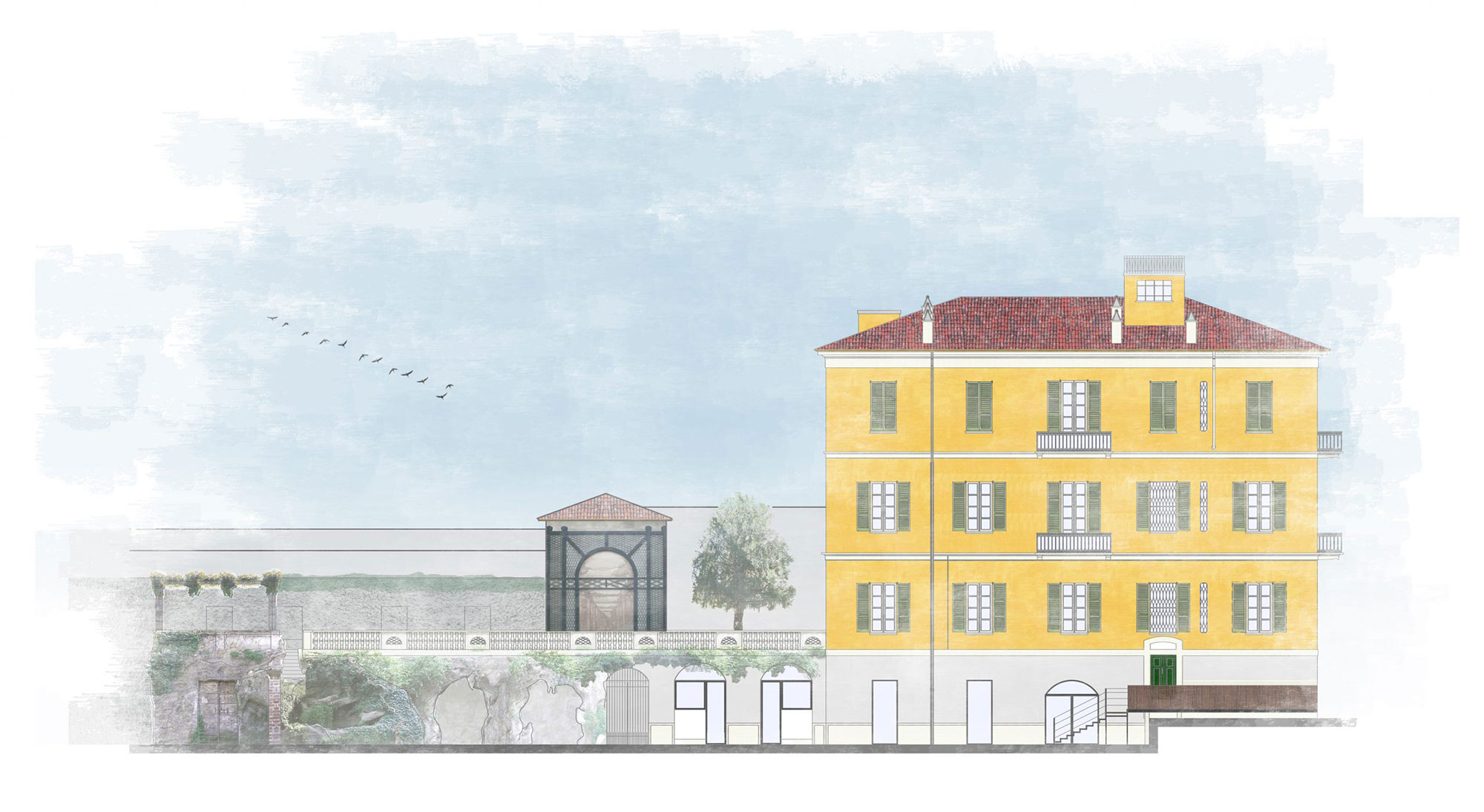
The building was built in 1850, it has the typical architectural setting of the nineteenth-century Lombard. It is spread over three floors above ground, in addition to the basement floor, below the garden level to the south. The attic, at human height, completes the building. The articulation of the spaces of the different floors underlines two well-defined areas: the ground floor and the first floor which are used as the owners’ residence, the second floor which configures two apartments served by the central staircase as well as the attic. Finally, the cellars that have been renovated and converted into a restaurant.
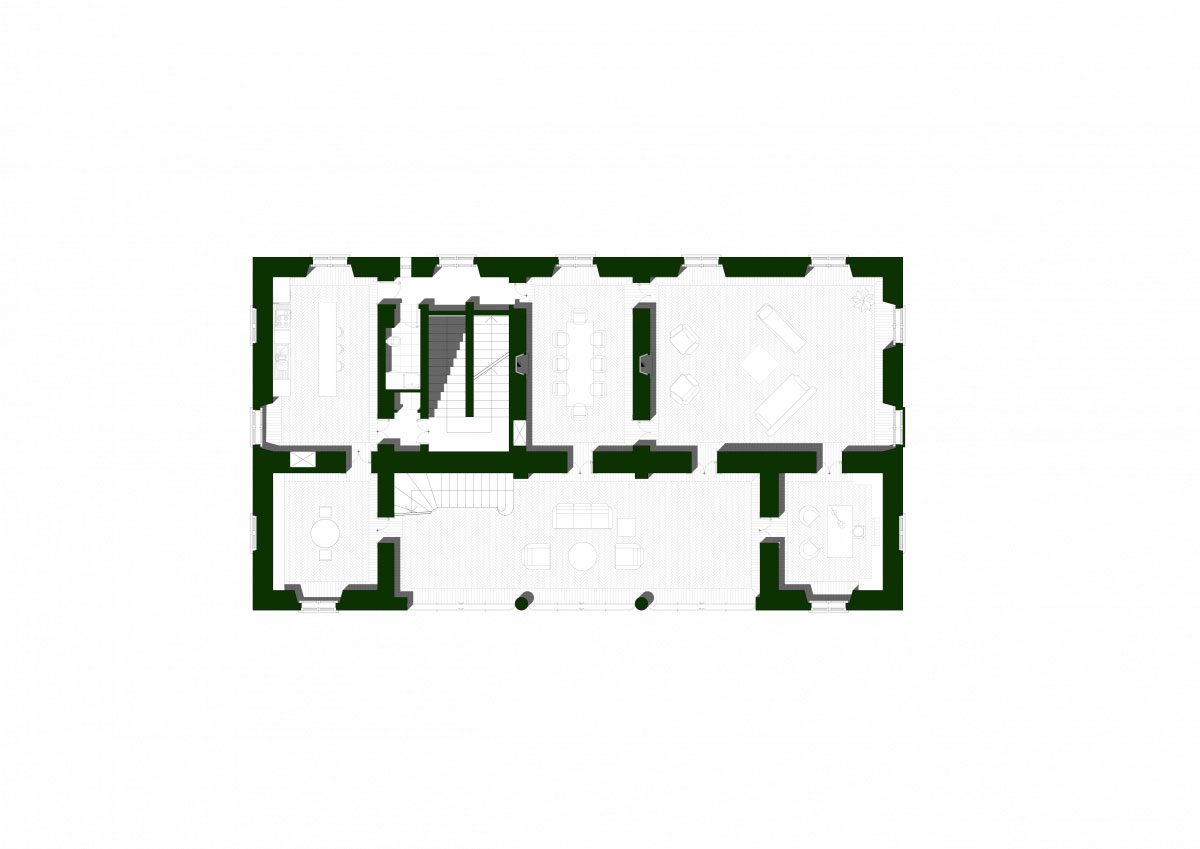
It is verified how a simple intervention, the closing of the porch with a glass window, completely change the setting and therefore the image and use of a house. And so this large window with thin golden glasses, facing south, towards the sun, floods this large room, which now acts as the entrance to the hall, makes this old building with a consolidated and reassuring appearance a luxurious and joyful home. Open to life.
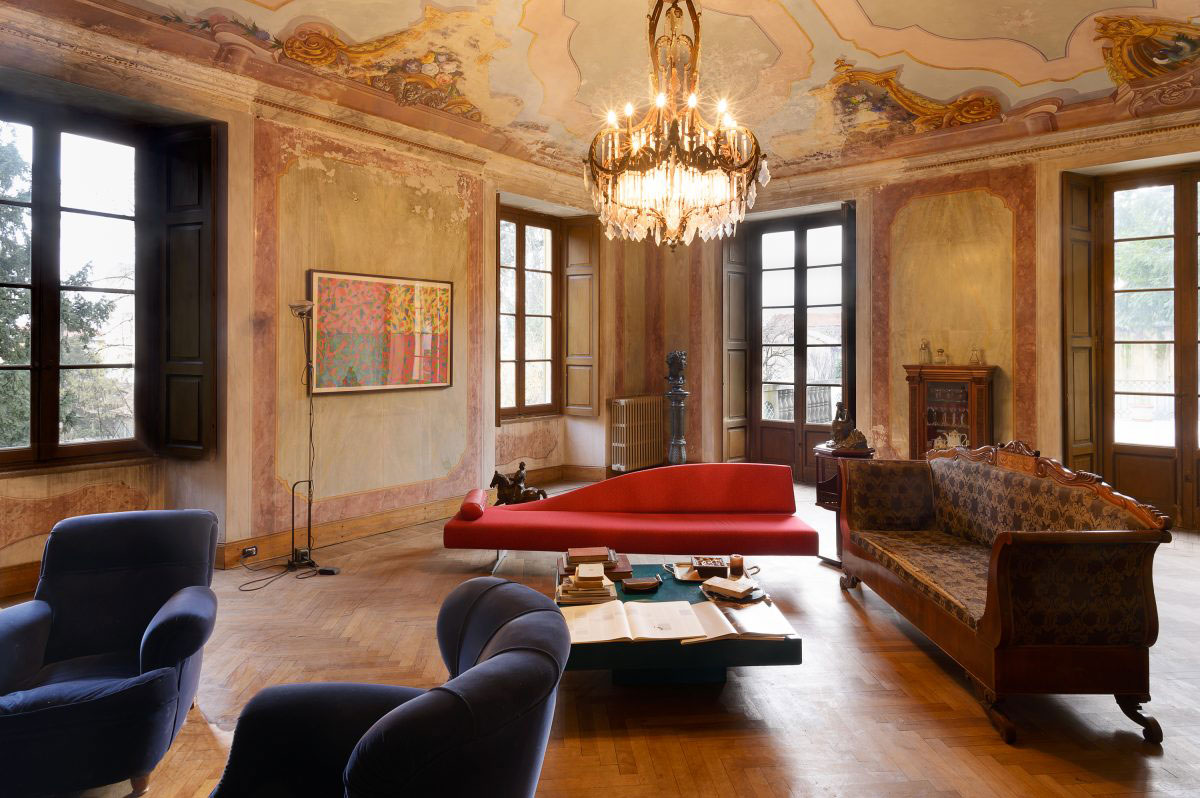
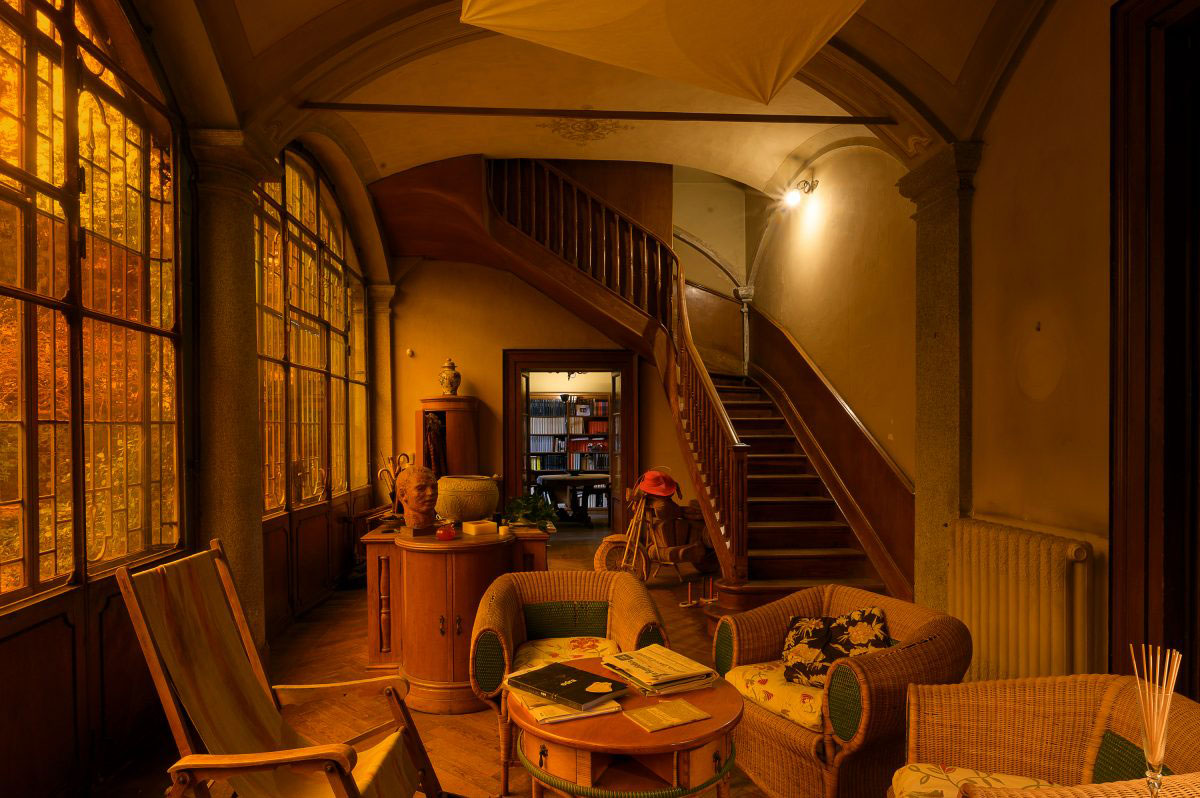
So the Hall, also used as a summer living room, opens to the south garden and looks at the “Spring”. In the spring and autumn periods, find yourself here with glasses that reverberate the yellow of the sun, even if there isn’t, to have afternoon tea or a cool drink in the evening. An enchantment. All parquet. It disengages the whole house.
To the north-east, a large room with two large windows facing the rising sun that gives access to a large terrace that completes its use in the summer, facing east and north, always remains cool and windy. A great badger naturally shades it. The compartment with “Nerviane” dimensions ante litteram 6x8x4 gives a feeling of greatness that cannot be imagined by simply reading its measurements. The pavilion vault all frescoed with Italian early twentieth-century taste. Venetian-style stucco walls. Parquet to cover the floor. A large fireplace warmed the large room and still works beautifully today. Two other north windows to refresh in the summer.
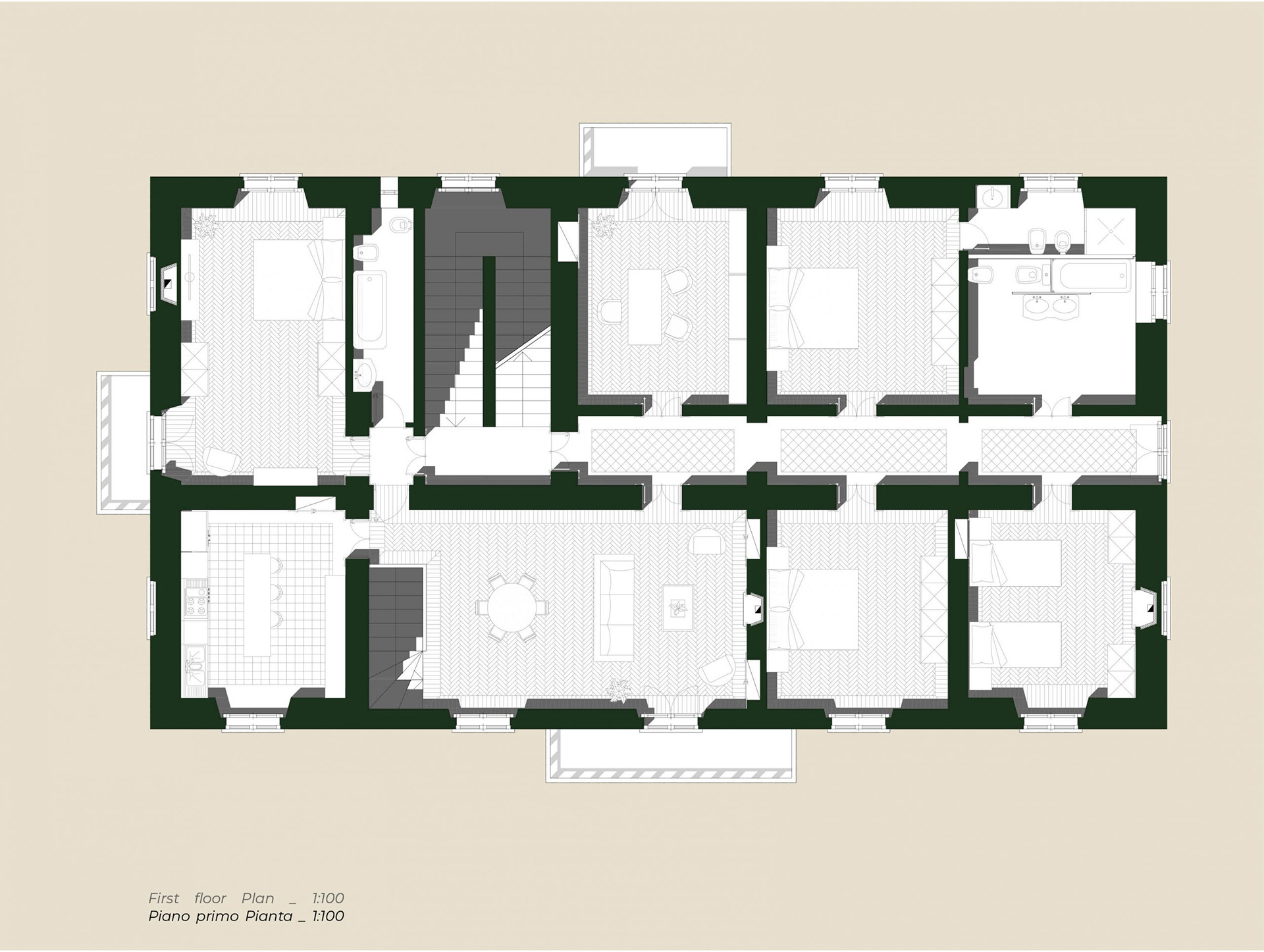
The internal staircase leads to a large room used in various ways and disengages the entire floor. A large fireplace, not used today, dominates the central wall on the east side. The pavilion vault frescoed with two small rose windows at the ends of its length reproduce bucolic landscapes. A large central rose window to accommodate central lighting that is not used today. A French window with balcony overlooks the south garden as well as the second window that completes the lighting of this large room.
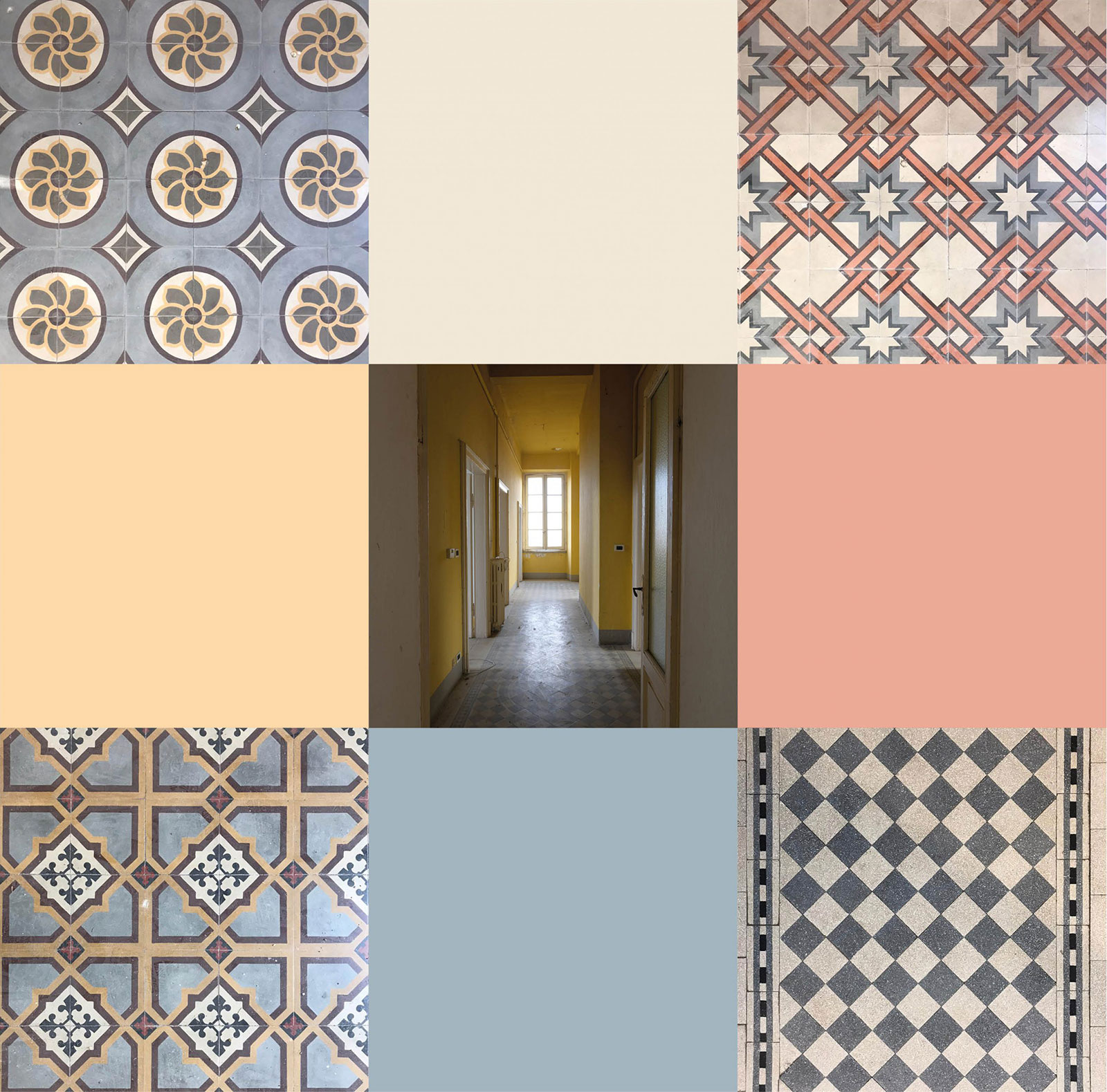
It was built with this morphology in 1932 when from a large room variously bordering the roof and considering the considerable heights, it was set up completely autonomous and divided into two apartments: one of three rooms and one of six. Roof slab with steel and perforated beams. All the floors are of a certain value, they are made with grit bricks and cement of beautiful designs, typical of the time, different for each room. Two balconies, one to the north and the other to the west.
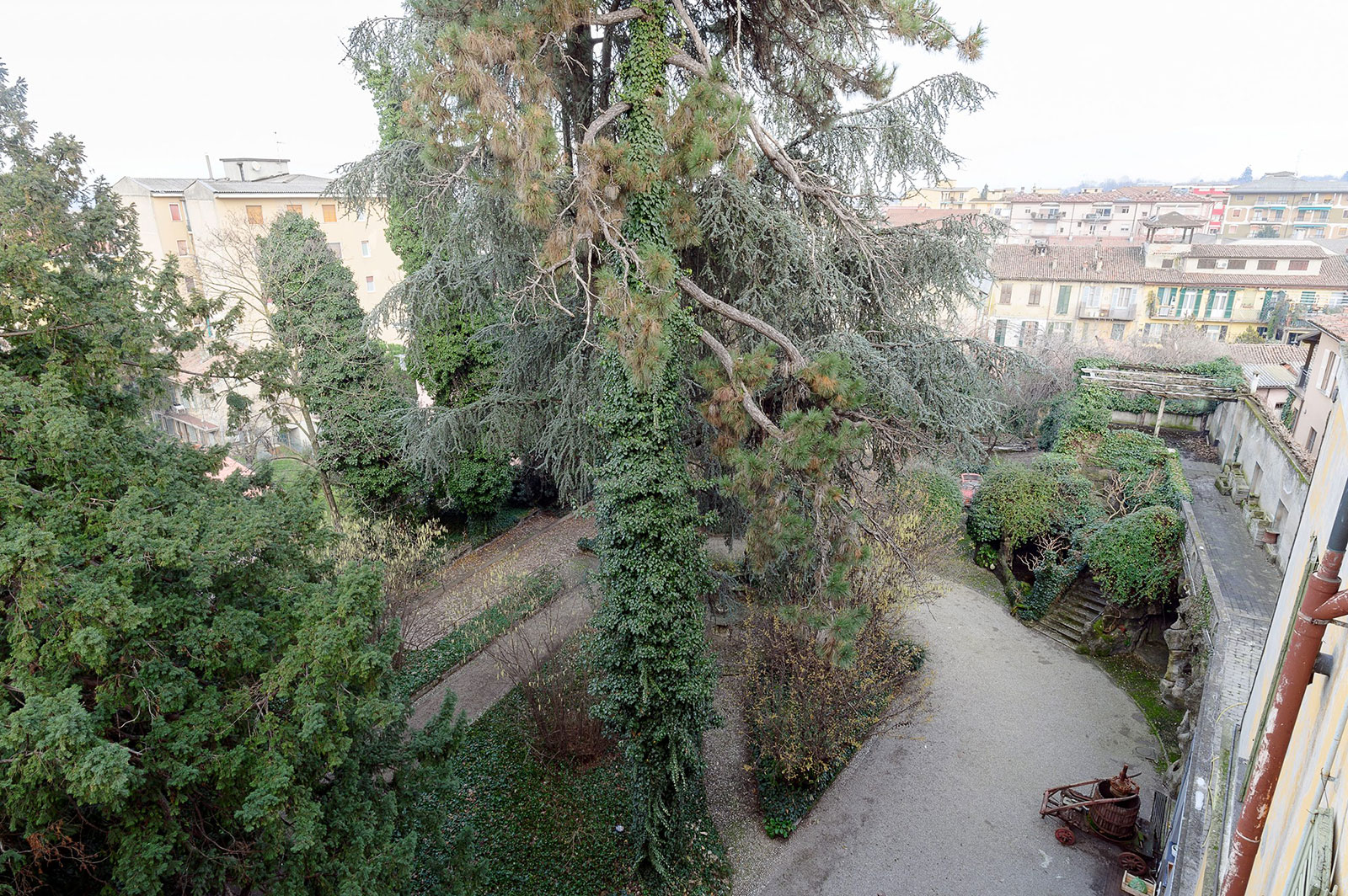
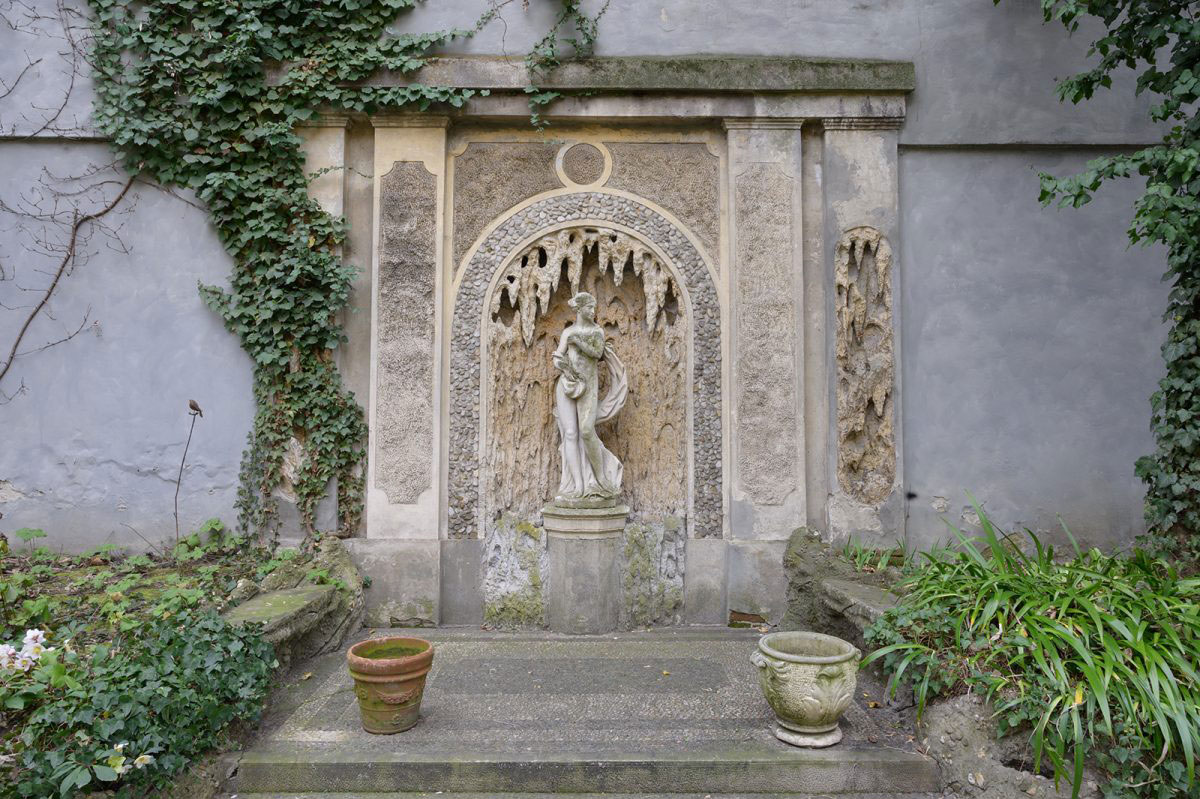
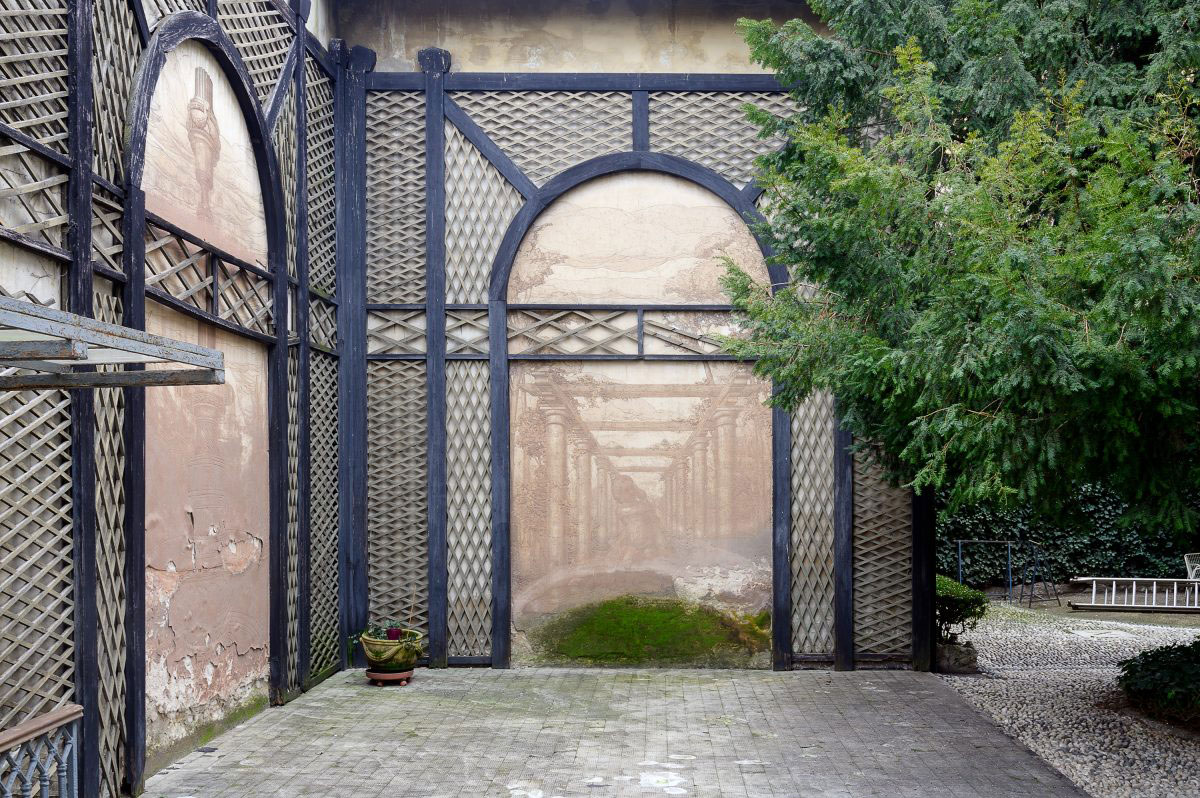
A building of this level could not miss a small house, detached and independent from the manor house, to be used as a caretaker’s house. In this case, it is also the gardener who keeps the small park tidy.
The caretaker’s home: Spread over two floors, ground floor and first floor. On the ground floor, there are a living room with a fireplace and a kitchen. On the first floor, there are two bedrooms and a bathroom. It overlooks the south garden, secluded and shaded by two badgers which however do not prevent it from seeing the entrance gate of number 3.
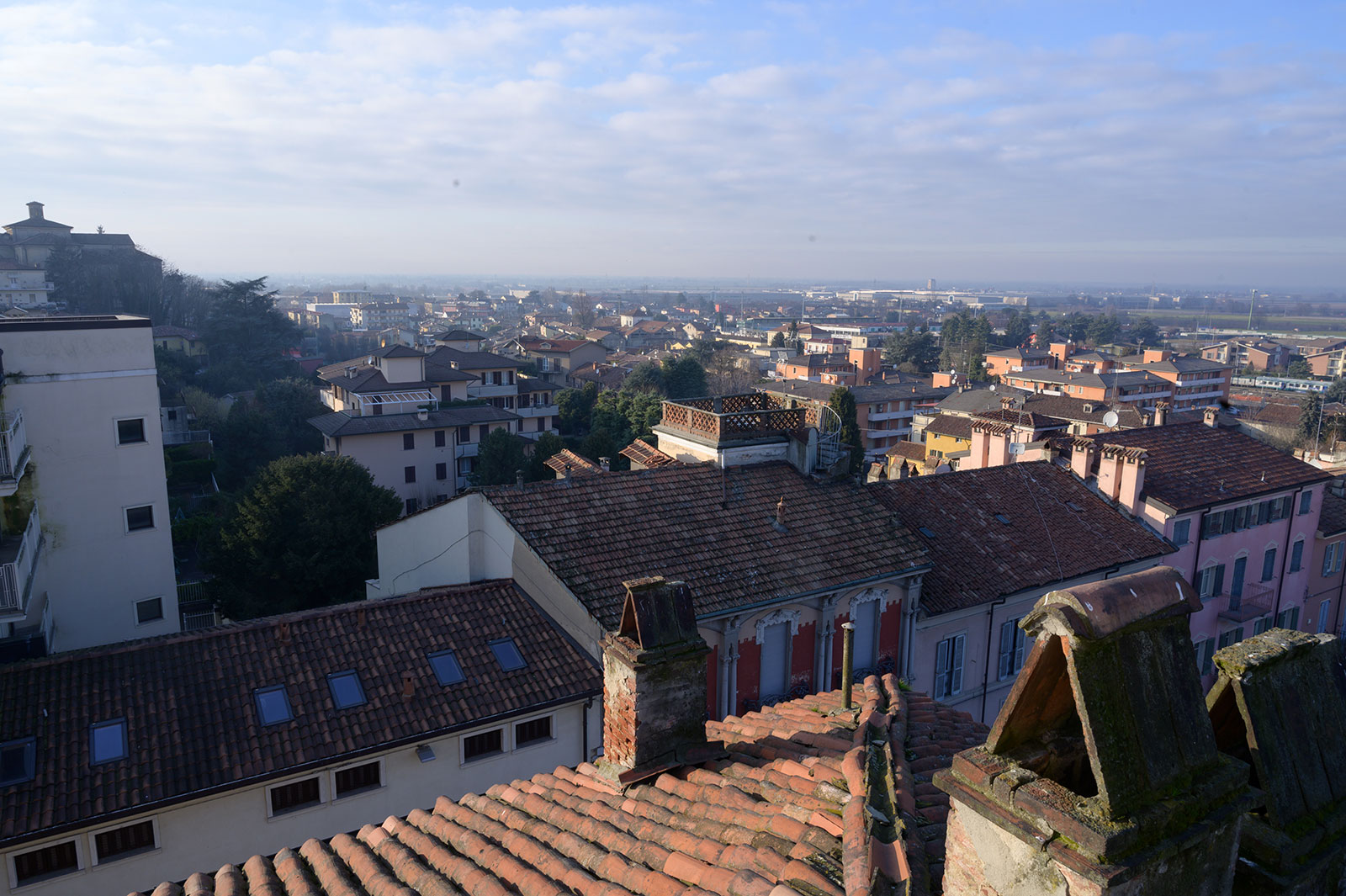

From the second floor, with the staircase, which has changed the size of the ramps but always in continuity with the main staircase which has kept the ramp width of 1.30 meters up to the second floor, you can access to the attic. Of the same planimetric development of the lower floors with an area of about 280 sqm. Gutter height 0.80 meters and in the eaves 3,30 meters. Various walls that continue the load-bearing walls of the other floors and which contain the flues of all the chimneys of the lower floors. They divide it into different areas.
From the central landing just above the flight of stairs, a beautiful small cast iron spiral staircase leads to the “small tower”. A small compartment lying on the ridge of the roof spaces the 360 ° view all windowed as it is on all four sides. To the north the Po Valley with a view of the crown of the Alps with the two massifs of the Matterhorn and Monte Rosa. … and the Madonnina that shines with its gold in the sun on particularly clear days with the north wind.
Share
